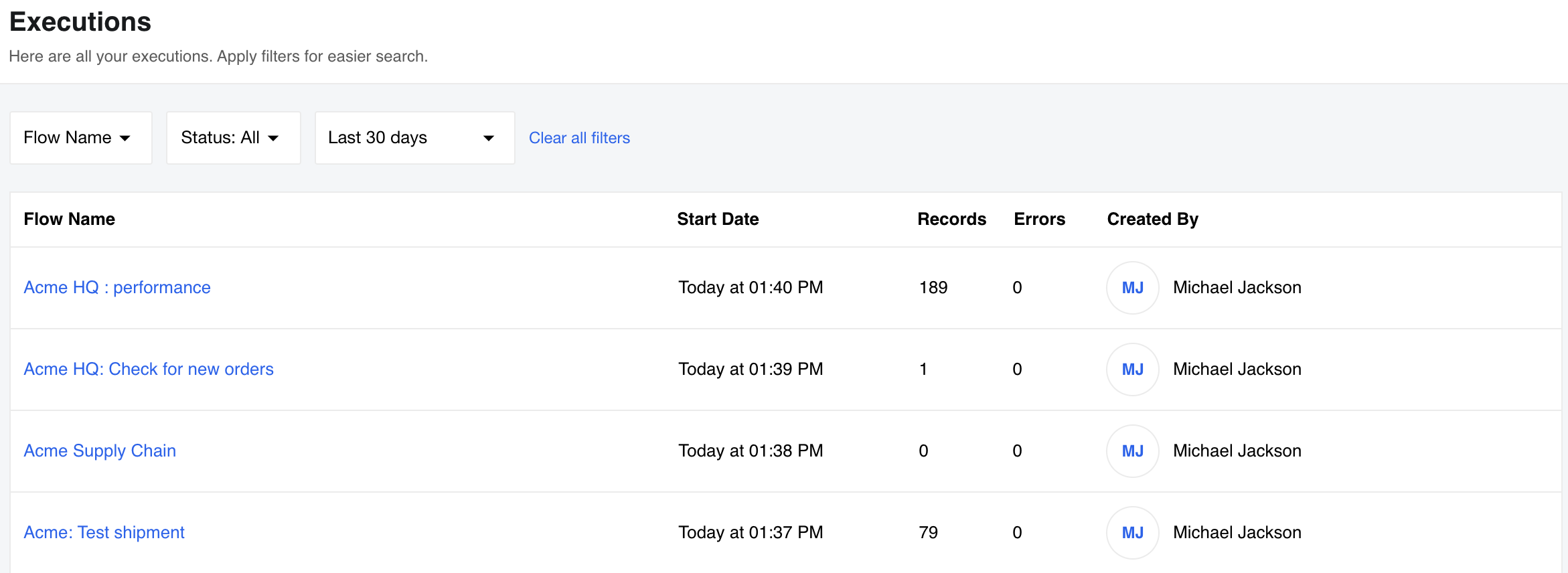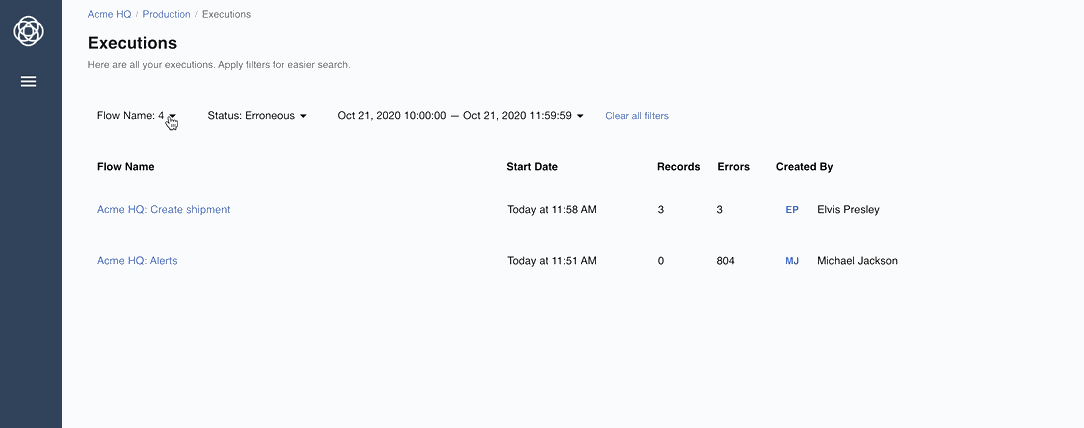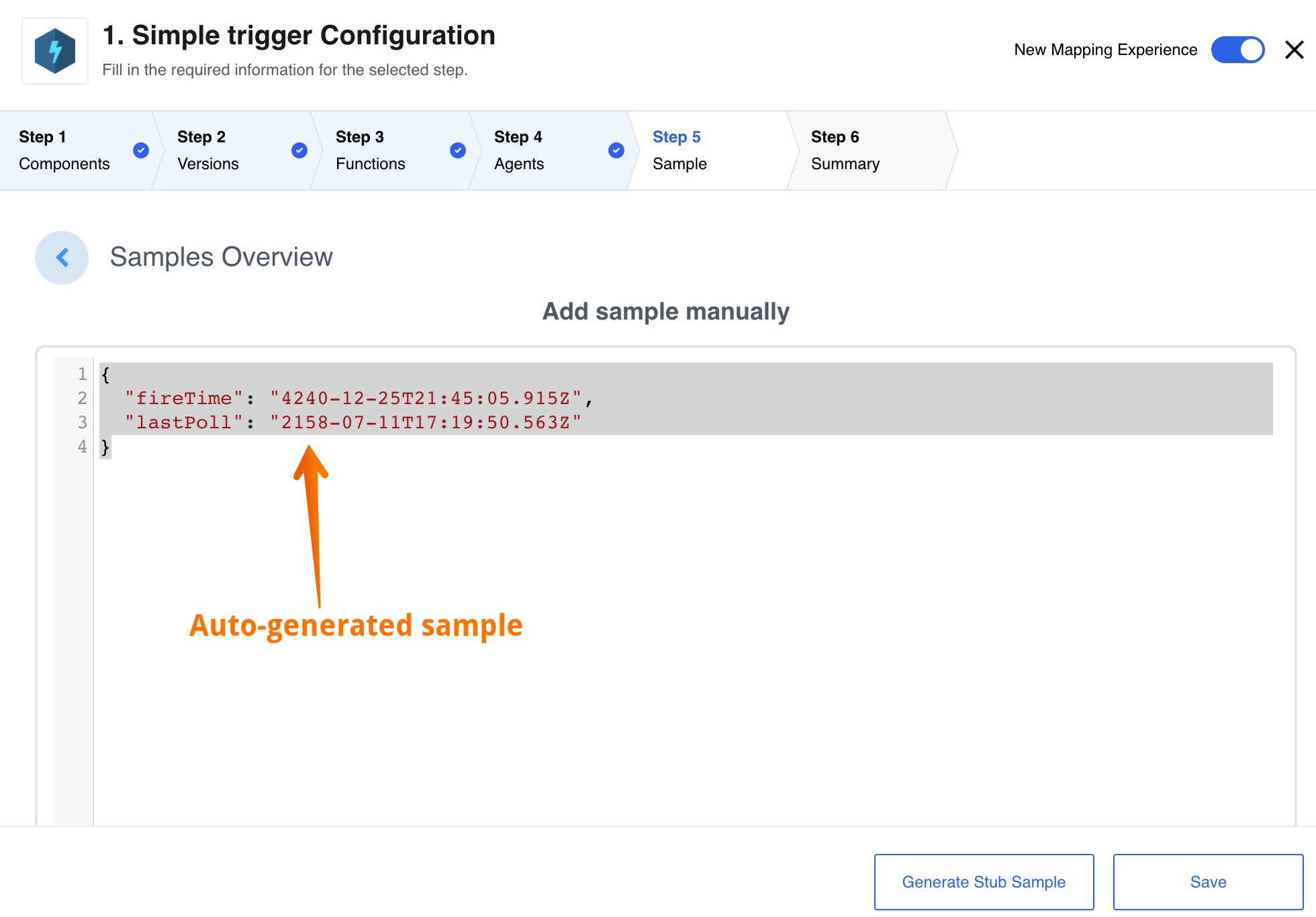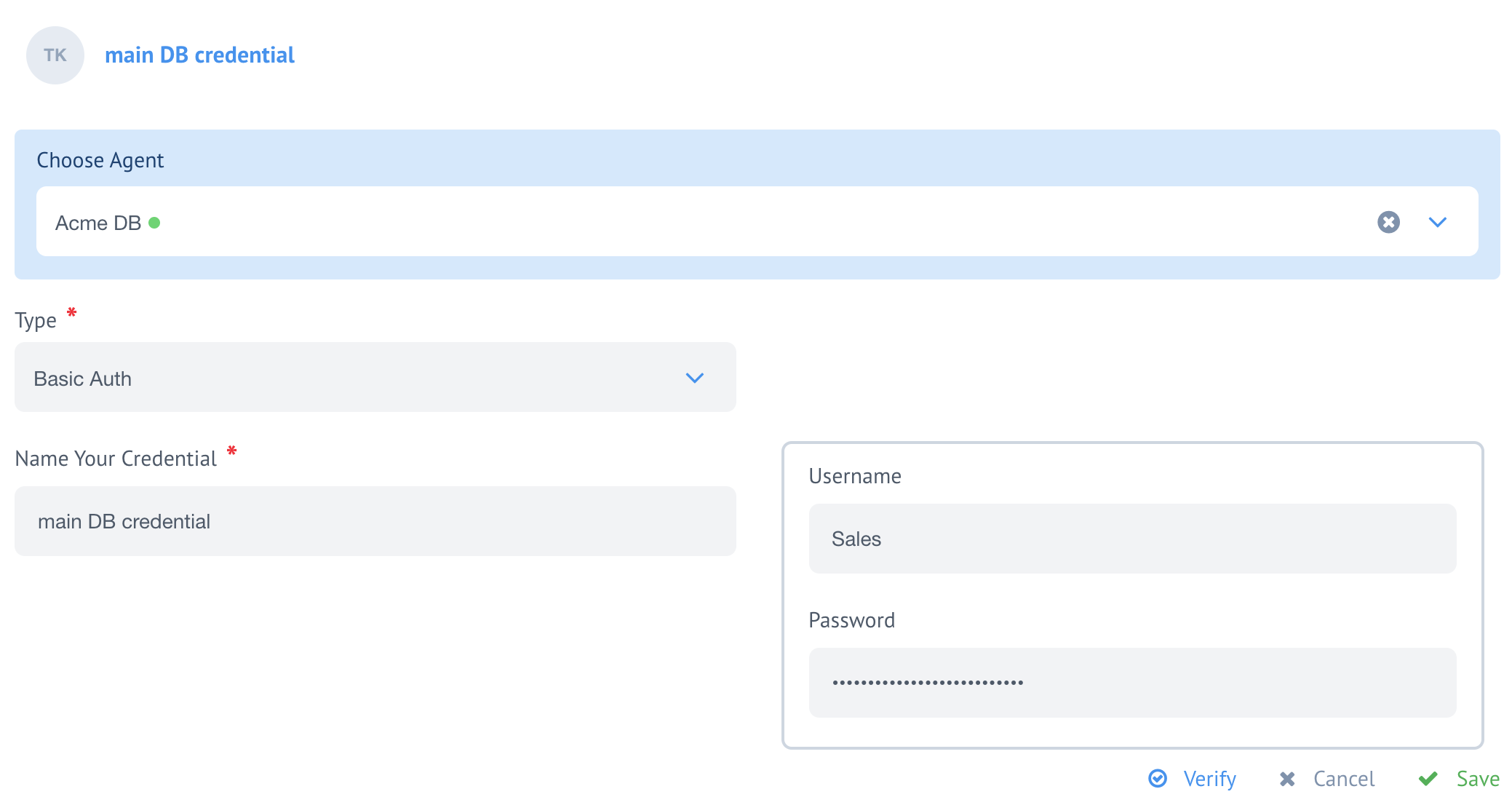Product Update - v20.43
Features
Secrets Feature
We are happy to announce the public release of Secrets feature - a service which independently keeps access tokens up-to-date so any integration step would get a valid and working access credentials to the third party resources. The service updates tokens behind the scene using the token expiration information.
Secrets addresses the race-condition and other contention-on-shared-data problems of OAuth2 authorisation process frequently happening due to concurrent and asynchronous work of steps in different integration flows. With this service in place, components are not required to update the access tokens. The Secrets takes over this process and supplies the Components up-to-date access tokens directly.
For more details visit the dedicated Secrets feature documentation page.
New components working with Secrets
Along with the public release of Secrets we are releasing two new generation components, REST API v2 and Salesforce v2, which use the Secrets Management Service.
These fully refurbished components are not strictly backwards compatible due to architectural differences between Secrets and the ordinary Credentials systems.
The old versions of these components are still available for a foreseeable future, however, they will be marked as deprecated. We will only make security updates if required, but further development of these versions will not be done.
We encourage our customers to try the new generation components and give us your feedback.
Visibility Authentication Clients
With this release we completed the authentication clients (auth-client)
visibility levels. The auth-client can now have workspace, contract, tenant
and global access levels. This means you can create auth-client for any access
level, be that only for one workspace or for the entire cluster of tenants.
Check our API documentation
for more information on auth-client creation.
Improvements and Updates
Execution and Logs pages
From this release, all execution threads on Executions page will show the times in absolute format AM/PM or 24h depending on your local setup.

We are introducing Clear all filters enhancement for Executions and Logs pages for clearing all selected filters in one go. Here is an example of usage on Logs page:

This feature is hidden by CSS by default so that the look & feel of OEM tenants is not disrupted. Feel free to adjust the CSS to introduce this functionality in your tenant.
Mapper UI
We continue our efforts to streamline and improve the new mapping experience based on your feedback. In this release we concentrated on loading time improvements, JSONata previews, dynamic drop-downs and manual sample creation.
When using JSONata expression for input fields, the preview is rendered with “pretty print” instead of one single line of code which ehances the mapping experience and helps to spot any errors while building an integration flows.
When using the dynamic drop-downs fields the search appears only if there are more than 7 items to choose. In addition, all dynamic drop-downs have reload buttons to refresh the list.

While designing an integration flow you can just use an automatic sample regenerated the platform and already populated based on the metadata.

Authentication Secrets with Agents
Now you can choose to add Authentication credentials for the steps running on Local Agents. It works for old and new VPN Agents.

Node.js Sailor update to 2.6.17
We release a latest update of Node.js Sailor version 2.6.17 which disables
message header logging at info level.
Fixed Bugs
- Addresses the issue with Rendering Large Amount of Input Fields in the Browser.
- Fixes the bug when unexpected and out of order execution results appear in thread list.
- Addresses the UI bug when the Logs window in the flow-designer overlays the Continue button.
- Fixes the restriction of Recipe activation with Secrets.
- Addresses the UI bug when an invalid JSONata expression in the new mapper would not case error.
- Fixes the problem with passing the value to text-field-view.
- Addresses the problem when the dynamic metadata generation while toggling between actions that have dynamic metadata but no configuration fields.
Components
Salesforce Component
A new version 2 component is introduced. While technically it is similar to the old one, this component uses the new service to manage Secrets. We have also removed the deprecated functions from the new Salesforce v2.
- NEW - Component uses Secrets Management Service for OAuth.
- NEW - Component uses the latest (
v2.6.17) Node.js Sailor.
REST API Component
A new version 2 component is introduced. While technically it is similar to the old one, this component uses the new service to manage Secrets.
- NEW - Component uses Secrets Management Service for OAuth.
- NEW - Component now includes attachment information in outbound message.
- NEW - Includes status code, HTTP headers along with body in produced message.
- IMPROVEMENT - Annual audit of the component code to check if it exposes a sensitive data in the logs.
Oracle EBS Component
Introducing a new component for working with the Oracle E-Business Suite services.
- NEW - Introducing new
Execute Methodaction.
Microsoft Dynamics CRM Component
- FIXED -
emitcalled withoutawaitcases in the code. - UPDATED - dependencies for all used packages.
- IMPROVEMENT - Annual audit of the component code to check if it exposes a sensitive data in the logs.
SugarCRM Component
- IMPROVEMENT - Annual audit of the component code to check if it exposes a sensitive data in the logs.
- UPDATED - dependencies for all used packages.
Sailor version update in bulk
Following the Node.js Sailor version 2.6.17 release, we updated the following
integration components dependencies:
- Code Component
- Lookup Table Component
- Email Component
- Google BigQuery Component
- Jsonata Component
- Mapper Component
- Pub-Sub Component
- Request-reply Component
- REST API Component - both deprecated and new V2
- Router Component
- Simple-trigger Component
- Splitter Component
- Utility Component
- WebHook Component
- MongoDB Component